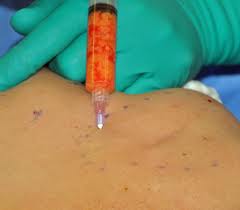Breast surgery, whether it is for aesthetic or reconstructive purposes, is one of the most common forms of plastic surgery of the body. Over the past decade fat grafting has worked its way into a mainstream technique for all forms of breast reshaping/remaking surgery. It has become so pervasive based on articles in peer-reviewed journals and at local, regional and national plastic surgery meetings that it seems it is now both a well used and well accepted procedure. This is particularly interesting in the face of the reality that fat grafts are unpredictable and far from a perfected surgical technique.
In the July 2013 issue of the journal Plastic and Reconstructive Surgery, a survey article was published entitled ‘Trends in Autologous Fat Grafting to the Breast: A National Survey of the American Society of Plastic Surgeons’. The purpose of the survery was to determine the national trends for fat grafting to the breast and was based on a questionnaire sent to over 2500 members of the American Society of Plastic Surgeons. The data for the results was based on a near 18% response rate. Nearly 2/3s of plastic surgeons said they used fat grafting for breast reconstruction compared to only 1/4 for aesthetic breast surgery. The most common use of fat grafting in either aesthetic or reconstructive breast surgery was to disguise the border or improve the shape of an implant. Most plastic surgeons harvested the fat from the abdomen, processed it either by a filter or centrifuge and injected it with handheld syringes.

Similarly not surprising is that fat grafting for cosmetic breast surgery is not a standard technique for most plastic surgeons. While some plastic surgeons have shown in limited studies that volume can be maintained in cosmetic augmentation, it has not caught on as a more widespread practice due to obvious issues of cost, limited amounts of augmentation size and the lack of immediate and sustained results.
The one thing that is clear is that there are many diverse methods that plastic surgeons use for harvesting and processing fat. Most methods are based on what is perceived as ‘best practice’ or what is thought to work the best. But a lack of any objective method for assessing breast grafting outcomes still leaves the assessment of what works as purely subjective. The authors are also quick to point out that the practice patterns found for breast fat grafting do not serve as evidence that it works.
The one major obstacle to greater use of fat grafting in the breast is the concern of the breast cancer risk or the ability to diagnose a recurrence. Even though all studies to date have not shown an increased risk of cancer or significant interference with mammography, there will always remain some lingering doubt in some surgeon’s minds until more clinical data in that regard is generated.
Dr. Barry Eppley
Indianapolis, Indiana


